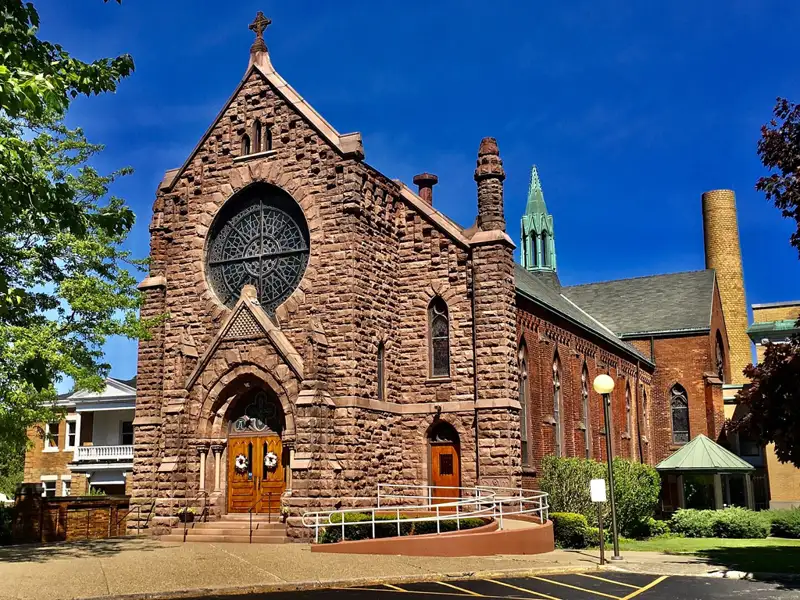Photo: Blessed Sacrament Roman Catholic Church, Buffalo; via Wikipedia.
The proposed $272 million bankruptcy settlement in the Diocese of Buffalo may include more than just financial compensation for over 900 survivors of clergy sexual abuse. Attorneys representing survivors are pushing for meaningful non-monetary terms, including new child protection protocols and public disclosure of priest personnel files, echoing a similar arrangement reached by the Diocese of Rochester in its own Chapter 11 case, NBC 2 WGRZ reported yesterday.
In Rochester, diocesan officials agreed to transfer priest files to the University of Rochester, where they can be stored and reviewed by the public. The settlement also introduced rules barring priests and staff from being alone with minors or taking children on solo overnight trips. Survivors and attorneys in the Buffalo case are advocating for the University at Buffalo to fulfill a similar role.
Survivor Kevin Koscielniak emphasized that truth and transparency are critical to justice. “These are crimes that were committed against children from an institution that was supposed to be so trusting and so worthy and so good,” Koscielniak said. “The public needs to know what this institution is really like, because this wasn’t just a little window. These were decades of cover up, decades. That story needs to be told.”
While the dollar amount of the proposed settlement is significant, many survivors stress that no amount of money can truly compensate for the trauma endured. “For me and for many survivors, the physical abuse is what it is, but it’s that psychological, emotional and ancillary damage that a survivor causes over so many years. That’s the worst part of it,” said Koscielniak.
A plaintiff’s attorney explained that survivor claims will be reviewed through a court-approved points system. Compensation amounts will vary depending on factors such as the frequency of abuse, the degree of violence or coercion involved, and whether the victim was groomed.
“No amount of money could compensate somebody for what they went through,” the attorney said. “This is the way that the courts and the bankruptcy committees have developed the evaluation process.”
Before the plan can be finalized, survivors must vote on it. While attorneys anticipate that the process could conclude in early 2026, delays may push it into mid-year.
Survivors’ legal teams are also requesting that the court permit victim impact statements, ideally in the presence of Buffalo Bishop Michael Fisher.
“I absolutely think that that would be important,” said a plaintiff’s attorney. “I would hope that the diocese would agree to that.”
In response, Diocese of Buffalo spokesperson Greg Tucker issued a statement indicating that child protection protocols have not yet been finalized, but are expected to be “memorialized as part of the chapter 11 plan.” He also affirmed the diocese’s support for allowing victim impact statements, calling them “essential to [survivors’] desire to achieve some semblance of justice and closure.”
If you or someone you love is a survivor of clergy sexual abuse, you are not alone. You may have legal rights under recent church bankruptcy proceedings or other legal channels. Understanding your options can be the first step toward healing and justice. Fill out the form below to have your case reviewed at no cost to you. You can also learn more about your legal rights through our Catholic Church Sexual Abuse Lawsuits Guide.




